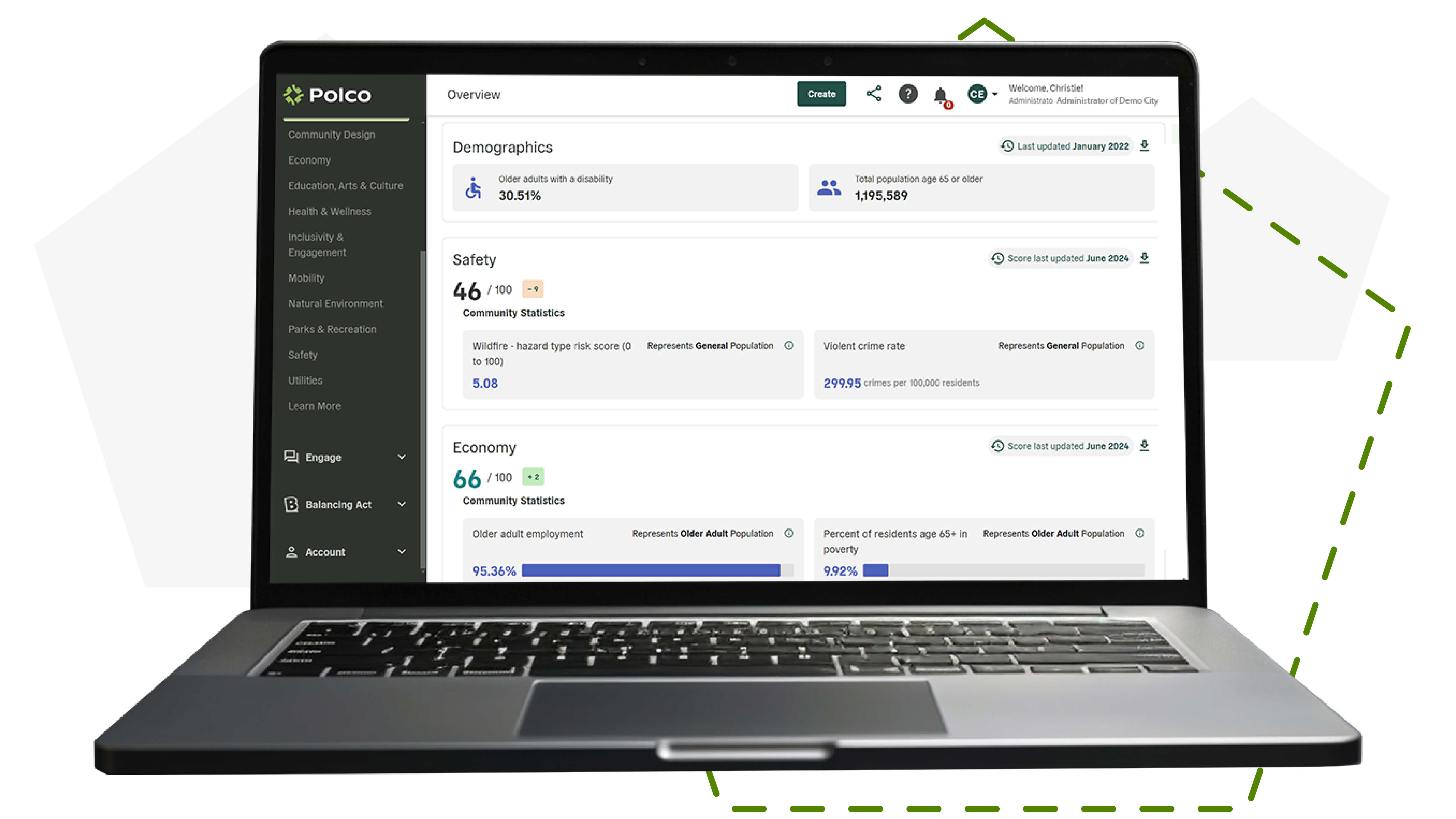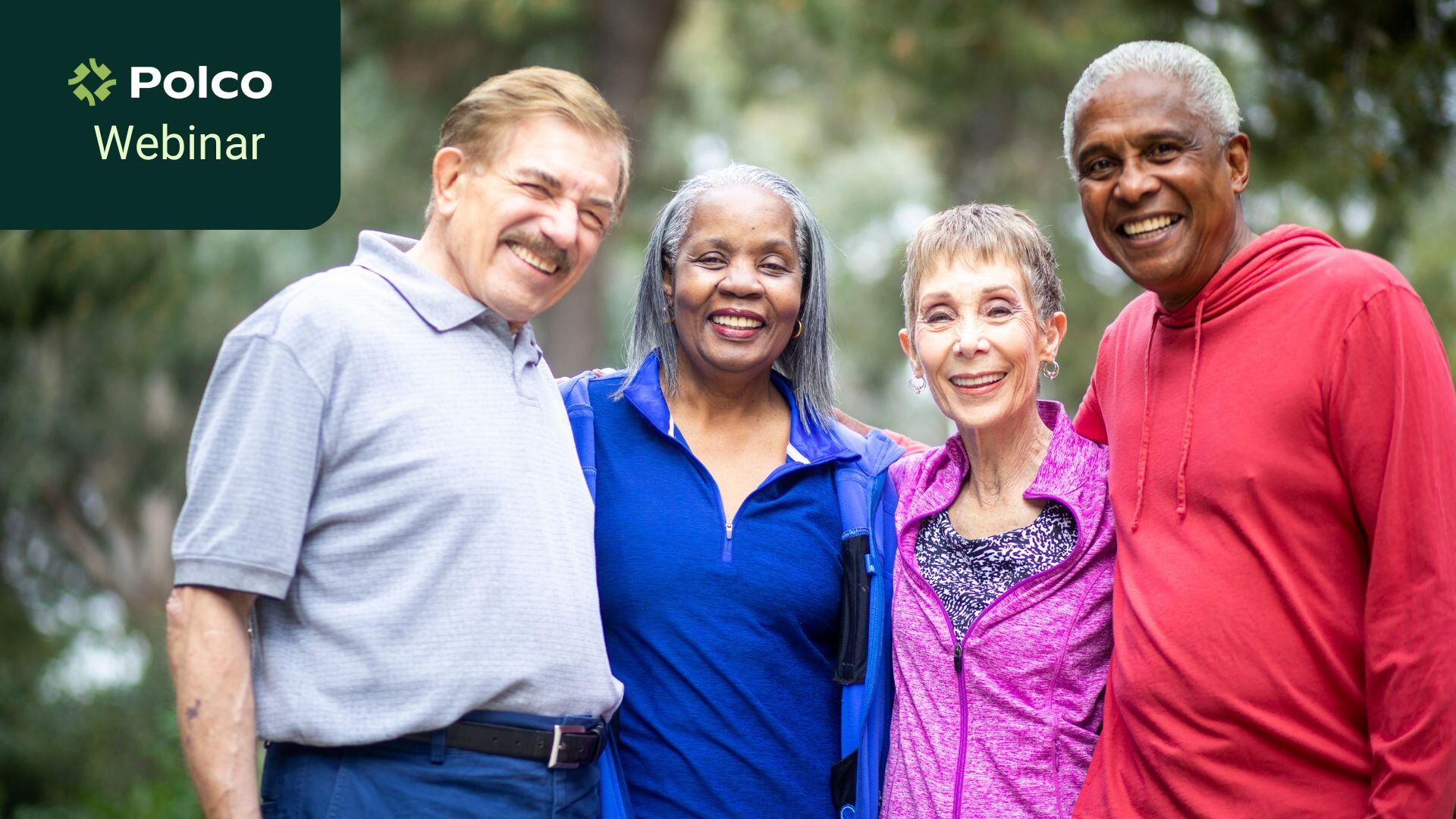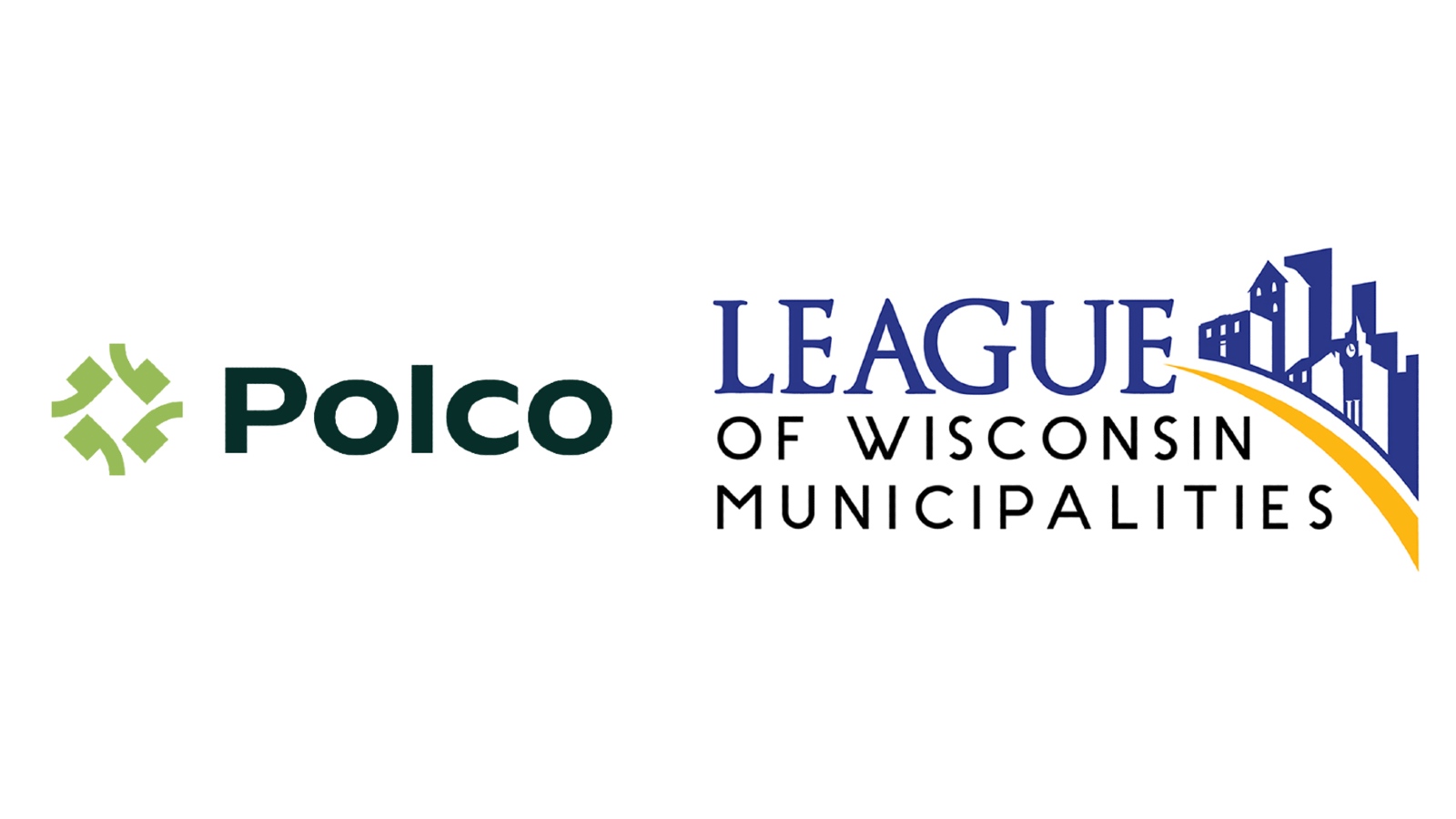How To Prepare and Create an Age-Friendly Community
By Polco on March 25, 2024

Eight opportunities for your organization to build better communities that support older residents.
 For the first time in US history, there will soon be more older adults than younger people. That demographic shift means community needs will change.
For the first time in US history, there will soon be more older adults than younger people. That demographic shift means community needs will change.
In this webinar, Polco Principal Research Strategist Michelle Kobayashi discusses eight opportunities where local governments can support their older residents. Then, Olivia Umoren, Public Policy Director from USAging, shares her insights on the new Older Americans Act regulations.
Kobayashi analyzed Polco's database to identify areas where organizations can best support older residents. The data comes from the Community Assessment Survey of Older Adults (CASOA), which asks older community members their opinions on their city and government services.
Data also comes from Polco's GPAL dataset. GPAL includes valuable public data curated by data scientists, academics, and local government experts from the nation's most trusted sources.

Opportunities for Local Governments Create Age-Friendly Communities
1. Housing and Living Arrangements
CASOA data show a mere 16% of older adults are satisfied with the availability of accessible housing. Results show that 45% of older adults also feel strained by property taxes. Older adults are also unsatisfied with housing affordability.
Kobayashi says governments are reviewing their housing policies nationally. Some cities now allow accessory dwelling units, such as guest houses, to make housing more affordable. Rezoning for more dense infills allows for more affordable housing where people can live, work, and play in the same area.
2. Retirement and Employment
CASOA results show many older adults are working during their retirement years. However, the majority of older adults say they don’t have the opportunity to improve their work skills. And less than 15% are satisfied with the quality and variety of employment opportunities.
"Workforce alignment is a problem for many communities; we have many jobs that are going unfilled, and we have many older adults who are seeking work," Kobayashi said. "We need to figure out a way to reconcile that and harness and build older adults’ skills to help fill those gaps and improve that alignment."
3. Social Inclusion and Connection
Fewer than half of older adults said their communities are neighborly, and four in 10 reported feelings of isolation and loneliness. Kobayashi noted there are many opportunities to improve these statistics through land use codes to build more connected communities. She also says organizations can emphasize community events and opportunities to volunteer.
4. Health and Wellness
CASOA data show that older adults rate their physical and mental health well. However, we all know our health declines as we age. Giving older adults more opportunities to stay fit with walking trails and recreational activities supports overall well-being. Kobayashi also says ensuring food security and improving healthcare systems are essential.
"Of course, the longer we can keep these folks healthy, the less tax dollars we spend. Plus, we can offer more wellness opportunities to older adults at the end of their lives," she said.

5. Caregiving
Data show most people do not want to be in a nursing home. Older adults would rather age in place with assistance in their own homes. Kobayashi says older adults are the backbone of the caregiving system; typically, older adults are the caregivers themselves. They watch over their spouses, friends, and neighbors. Organizations can support these caregivers through programs, financial assistance, training, and policies.
6. Information
CASOA data show that many older adults are unaware of the services available until they are in a critical time. Kobayashi says this is a source of frustration for many organizations that support older adults because they put in immense effort to get the word out. Yet, it's still a challenge.
"It's important to understand and ask older adults, 'How do you want to be communicated with? When should you be communicated with, and what types of information should we be providing?'" Kobayashi says.
7. Mixed-Use Development
Only 3 in 10 older adults are satisfied with mixed-use development in their areas. Mixed-use development improves access to services, entertainment, housing, health, and more. As we age, our mobility declines, so proximity to necessary services makes our daily lives easier.
8. Valuing Our Elders
CASOA shows half of older adults feel heard, and 4 in 10 say their community values them. Kobayashi says many people view older adults as service recipients who take resources, when really, older adults make significant contributions to society. They make great mentors, are often caregivers, and are significant economic contributors.
“Older adults are integral to our social fabric," Kobayashi said. "They're folks who understood what it meant to live in America when people were more connected. The idea is that they can spend their time, leadership, and life skills to make our communities stronger and less polarized. Older adults can play a critical role in our communities."
Watch the webinar to hear the Q&A with Olivia Umoren, Public Policy Director from USAging, and get insights on the new Older Americans Act regulations.
Learn What Older Adults Need in Your Community
Find out how you can best support older adults in your community with CASOA. AAAs and state and local governments across the nation trust CASOA to get accurate and reliable data on what older residents think of their city and government services. The data shows you exactly what older residents need and gives you clear insights into how you can create a more age-friendly community. Plus, you can compare your data to organizations just like yours.
Related Articles
Popular posts
Sign-up for Updates
You May Also Like
These Related Stories

How Polco’s New Track Feature Puts Older Adults’ Data in Focus

The Proven Method to Successfully Advocate Healthy Aging


